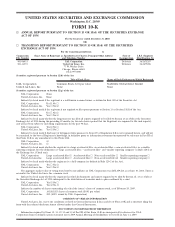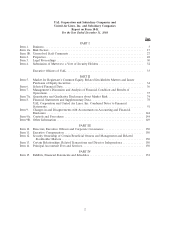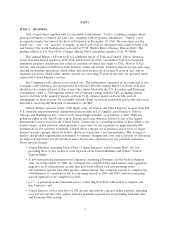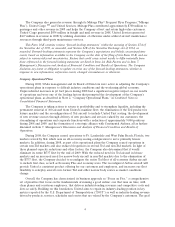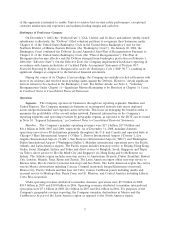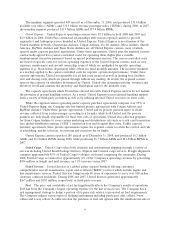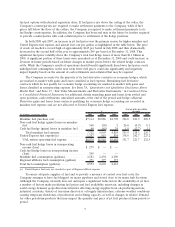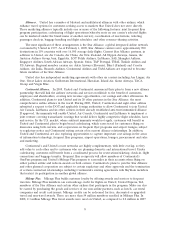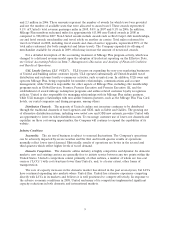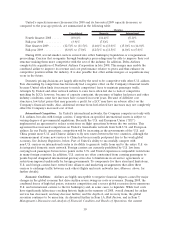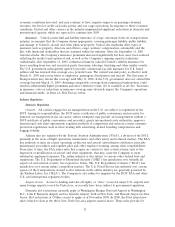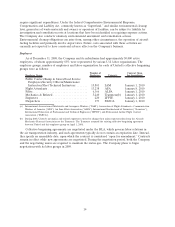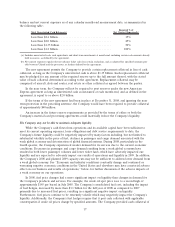United Airlines 2008 Annual Report Download - page 11
Download and view the complete annual report
Please find page 11 of the 2008 United Airlines annual report below. You can navigate through the pages in the report by either clicking on the pages listed below, or by using the keyword search tool below to find specific information within the annual report.economic conditions have had, and may continue to have, negative impacts on passenger demand,
revenues, the level of credit card sales activity and our cargo operations. In response to these economic
conditions, United and other carriers in the industry implemented significant reductions in domestic and
international capacity, which are expected to continue into 2009.
Insurance. United carries hull and liability insurance of a type customary in the air transportation
industry, in amounts that the Company deems appropriate, covering passenger liability, public liability
and damage to United’s aircraft and other physical property. United also maintains other types of
insurance such as property, directors and officers, cargo, workers’ compensation, automobile and the
like, with limits and deductibles that are standard within the industry. After the September 11, 2001
terrorist attacks, the Company’s insurance premiums increased significantly but have since been reduced
reflecting the market’s perception of risk, as well as the Company’s ongoing capacity reductions.
Additionally, after September 11, 2001, commercial insurers canceled United’s liability insurance for
losses resulting from war and associated perils (terrorism, sabotage, hijacking and other similar events).
The U.S. government subsequently agreed to provide commercial war-risk insurance for U.S. based
airlines and has renewed this coverage on a periodic basis. The current war-risk policy is effective until
March 31, 2009 and covers losses to employees, passengers, third parties and aircraft. The Secretary of
Transportation may extend this coverage until May 31, 2009. If the U.S. government does not extend this
coverage beyond March 31, 2009, obtaining comparable coverage from commercial underwriters could
result in substantially higher premiums and more restrictive terms, if it is available at all. See “Increases
in insurance costs or reductions in insurance coverage may adversely impact the Company’s operations
and financial results” in Item 1A, Risk Factors, below.
Industry Regulation
Domestic Regulation.
General. All carriers engaged in air transportation in the U.S. are subject to regulation by the
DOT. Among its responsibilities, the DOT issues certificates of public convenience and necessity for
domestic air transportation (no air carrier, unless exempted, may provide air transportation without a
DOT certificate of public convenience and necessity), grants international route authorities, approves
international code share agreements, regulates methods of competition and enforces certain consumer
protection regulations, such as those dealing with advertising, denied boarding compensation and
baggage liability.
Airlines also are regulated by the Federal Aviation Administration (“FAA”), a division of the DOT,
primarily in the areas of flight operations, maintenance and other safety and technical matters. The FAA
has authority to issue air carrier operating certificates and aircraft airworthiness certificates, prescribe
maintenance procedures and regulate pilot and other employee training, among other responsibilities.
From time to time, the FAA issues rules that require air carriers to take certain actions, such as the
inspection or modification of aircraft and other equipment, that may cause the Company to incur
substantial, unplanned expenses. The airline industry is also subject to various other federal laws and
regulations. The U.S. Department of Homeland Security (“DHS”) has jurisdiction over virtually all
aspects of civil aviation security. See Legislation, below. The U.S. Department of Justice (“DOJ”) has
jurisdiction over certain airline competition matters. The U.S. Postal Service has authority over certain
aspects of the transportation of mail. Labor relations in the airline industry are generally governed by
the Railway Labor Act (“RLA”). The Company is also subject to inquiries by the DOT, FAA and other
U.S. and international regulatory bodies.
Airport Access. Access to landing and take-off rights, or “slots,” at several major U.S. airports and
many foreign airports served by United are, or recently have been, subject to government regulation.
Domestic slot restrictions currently apply at Washington Reagan National Airport in Washington
D.C., John F. Kennedy Airport and La Guardia Airport, both in New York, and Newark Airport in New
Jersey. Slot restrictions at O’Hare ceased to apply as of November 2008. In 2008, the FAA issued new
rules related to slots at the three New York City-area airports named above. These rules provide for
11

